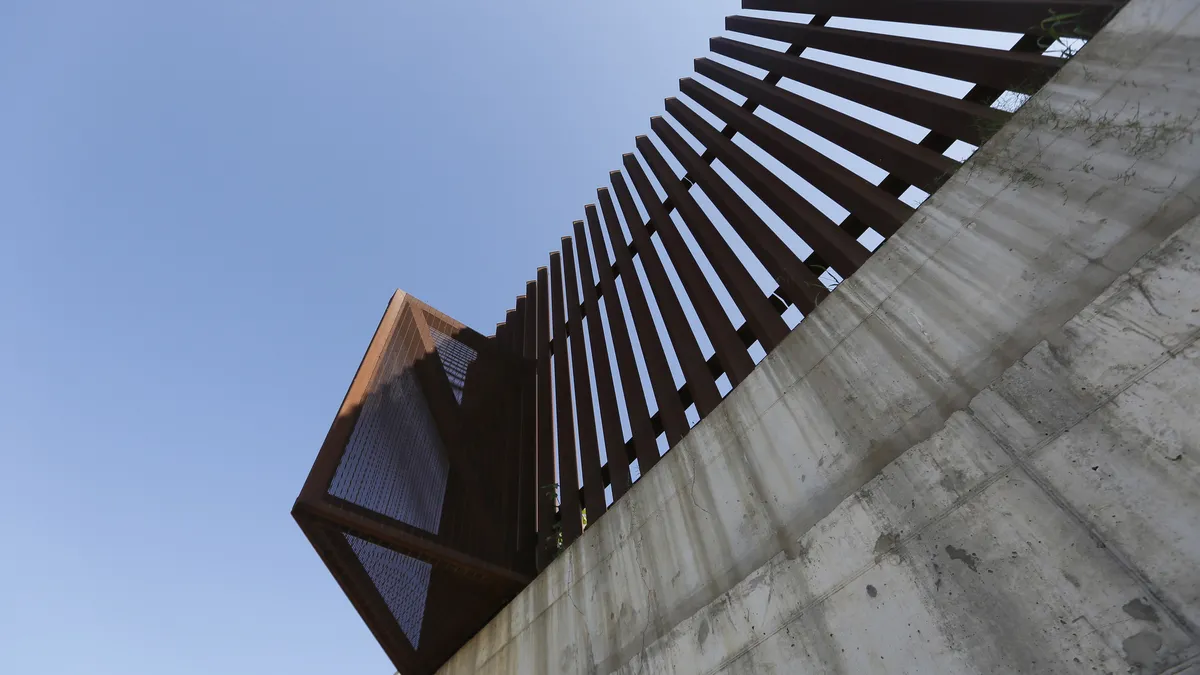To see how this announcement fits into the timeline of border wall construction, click here.
Dive Brief:
- Members of the U.S. military and the Department of Homeland Security’s Customs and Border Protection were able to cut through a steel bollard fence, one of eight border wall prototypes built near San Diego in 2017, with a saw, according to NBC News. Personnel breached the barrier during a test to determine the effectiveness of the prototypes, made of reinforced concrete and other materials, against readily available tools.
- NBC made the discovery after reviewing an internal report and photos from a February 2018 CBP report. Testing revealed that all eight prototypes could be breached. CPB personnel said that the prototypes were not meant to be “indestructible,” but only delay those trying to get through them until border agents could intervene. When asked about the failure, President Donald Trump reportedly said the fence was based on a previous administration’s design and that the barrier selected would be “very, very hard to penetrate."
- Katie Waldman, DHS spokeswoman, told NBC that the barrier currently being constructed was informed by what the department learned from the prototypes, but doesn't replicate them. "In the event that one of the steel bollards becomes damaged, it is quick and cost-effective to repair," she said.
Dive Insight:
In a July 2018 report to Congress, the Government Accountability Office outlined the deficiencies in the wall prototypes, including those related to constructability and design. The analysis of how difficult the barriers were to get over, under and through, as disclosed in the NBC story, was left out of the public version of the report for security reasons.
The agency determined that the CBP had not considered the cost of construction on different topographies or securing land from private owners, leading the GAO to conclude that border officials did not have enough information to make effective and efficient spending decisions about wall construction.
The GAO also referenced CBP’s prototype evaluation in its report. The examination revealed that all four concrete models would present serious constructability issues and that four of the other types of barriers would present moderate to substantial challenges. The GAO recommended that Homeland Security conduct a new cost analysis; the CBP responded that its evaluation was sufficient and that current policy was to base operational decisions first on risks and threats.











